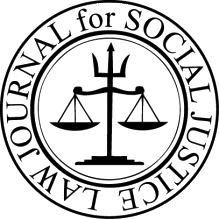By Liza Lawson Risoldi
In 2004, Chapelle’s Show featured the Racial Draft. Three announcers commented while the Black, White, Asian, Jewish, and Latino teams selected their draft picks. The Black team picked Tiger Woods and he then lost all his endorsements. The Latino team claimed Elian Gonzalez, a five-year old child who had been embroiled in a multi-national custody and immigration battle in 1999-2000. The Wu Tang Clan, heavily inspired by Asian culture, was drafted by the Asian team. Racial stereotypes and jokes permeated the skit.
Humor is often based in some “hidden belief we have.” Chapelle’s Racial Draft skit was based on America’s belief in a racial hierarchy, with Black Americans on the lower rungs (why Woods lost his endorsements once drafted to the Black team). Civil rights activists, historians, journalists, and lawyers have documented America’s racial hierarchy from slavery through law and culture to today’s race-based social injustices within housing, education, and mass incarceration.[1]
In the United States, those who identify as multiracial typically are identified by courts as monoracial – drafted into one race. This is particularly true for people with African American heritage. American culture adheres to the “one drop rule,” drafting anyone with any amount of African American heritage onto the Black team; a rule that is only applied to African Americans and is unique to the United States. Now, seventeen years after that episode aired, Americans still practice “racial drafting.”[2] Today’s number one draft pick is Kamala Harris, and she’s likely to be drafted onto the Black team.
Some argue that multiracial people face a distinct form of racial discrimination. However, Professor Tanya Kateri Hernandez argues that discrimination experienced by multiracial people in the U.S. most likely results from anti-blackness, not specific anti-multiracial sentiments.[3] Prof. Hernandez explains that those trying to create a separate category of discrimination regarding multiracial people distract from the common root of racial discrimination: anti-black prejudice.
For example, the birtherism conspiracy surrounding Barack Obama’s citizenship stemmed from his Kenyan ancestry – not his multiracial identity. Obama stated during a recent interview that, “what did happen during [his] presidency was, yes, a backlash among some people who felt that somehow, [he] symbolized the possibility that they or their group were losing status not because of anything [he] did but just by virtue of the fact that [he] didn’t look like all the other presidents previously.”
Vice President Kamala Harris, who is of Asian Indian and Jamaican descent, will likely face similar challenges and has already faced more birtherism challenges than Obama faced. She has been criticized as denying parts of her heritage, even though she consistently describes herself as Black and Indian.
It is American culture that is to blame for any perceived denial of her ancestry. For evidence, look no further than media portrayals, Facebook posts, or the racist and sexist battle that took place on her Wikipedia page. Regardless of how Harris explains her heritage, many Americans will draft her onto one team. And for most Americans, she will end up on the Black team.
One thing is certain, regardless of how Harris views or explains her own identity, she will continue to be “drafted” back and forth because truly accepting her multiracial identity would poke holes in America’s racial hierarchy which has tragically deep and stubborn roots.
[1] See generally Dorothy Roberts, Fatal Invention: How Science, Politics, and Big Business Re-Create race in the Twenty-first Century (The New Press 2011); Isabel Wilkerson, Caste: The Origins of Our Discontents (Random House 2020); Richard Rothstein, The Color of Law, (Liveright Publishing Corporation 2017); Michelle Alexander, The New Jim Crow, (The New Press 2020).
[2] See generally Isabel Wilkerson, Caste: The Origins of Our Discontents (Random House 2020).
[3] See generally Tanya Kateri Hernandez, Racially-Mixed Personal Identity Equality, 16(3) Law, Culture and the Humanities 354 (2020).
